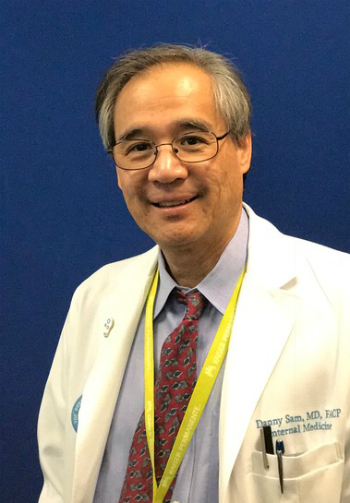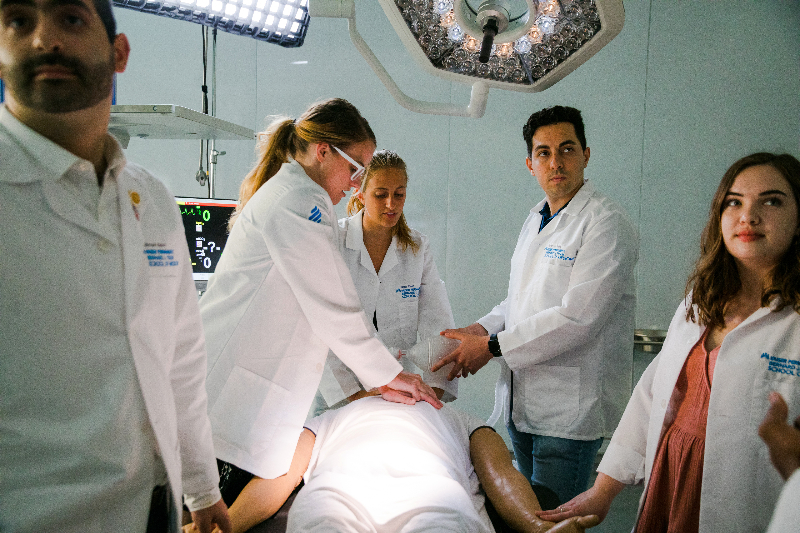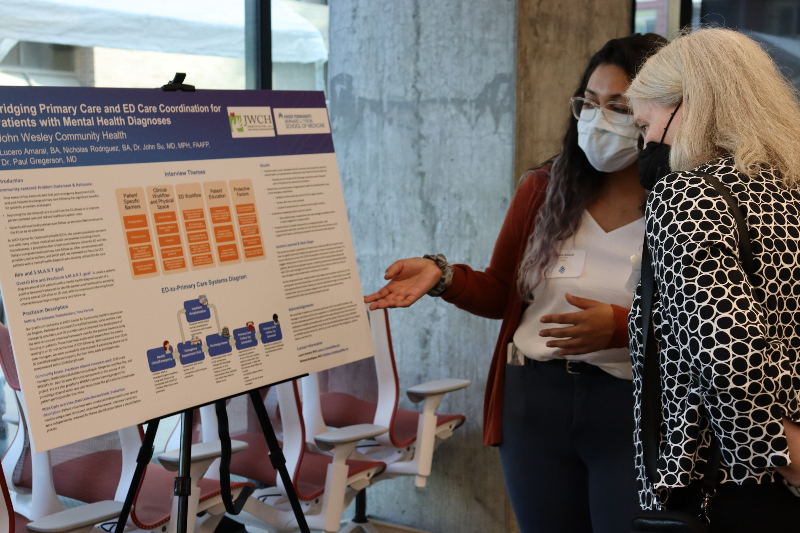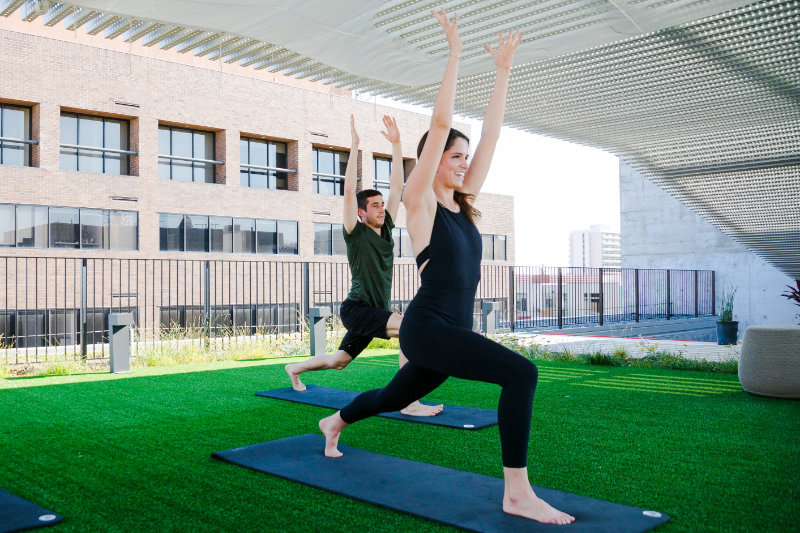Kaiser Permanente Bernard J. Tyson School of Medicine’s Simulation Center provides hands-on experience in a supportive environment.
Inside Perspective: Danny Sam, MD, FACP
A Passion for Training Physicians of Tomorrow
This is a series of first-person pieces from the Permanente physicians on the ground floor of creating the new Kaiser Permanente School of Medicine.
Who am I?

I began my Internal Medicine practice 28 years ago at Kaiser Permanente Santa Clara, located in the heart of Silicon Valley. Like so many others, I chose primary care because I loved being a part of my patients’ lives.
As my career progressed, I became a module unit leader and developed the diabetes service, a multidisciplinary team that helped physicians and other care team members with patient management. Also, I am a member of the Departmental Peer Review Committee. We take interesting or controversial cases, investigate them, learn from them what we can, and share this with our peers.
While I love patient care, my primary passion has always been medical education.
One of the best things about being a physician is that we get to remain students for the rest of our careers. There is no greater joy than to watch a medical student discover a new concept; or a resident, stumped by a complex problem, make the connections to solve it.
When I discovered that Santa Clara had a residency program, I jumped on board and never looked back. I taught residents and medical students, developed an Internal Medicine board review course, and became program director in 2004.
Later I became director of Graduate Medical Education. My team and I developed a primary care track called CHOICE, in which our residents could concentrate in areas like IT or community service. We partnered with the University of California, Davis School of Medicine in the development of a six-year medical school/residency primary care track, and more recently with Boston University to develop the Boston University-Kaiser Permanente Silicon Valley Branch Campus. Each year, 16 third-year students from BU Medical School do their core clinical rotations at Kaiser Permanente Santa Clara and San Jose.
It all kept me busy. Still, out of all of this, my proudest achievement is my residents.
During my 13-year tenure as program director, our Santa Clara program has graduated 160 to 170 outstanding physicians. I still see them at conferences, and they keep me up to date on their lives and careers. Many are now leaders in their careers all over the region. Their success has been my greatest reward.
What am I doing for the School of Medicine?
Currently, I’m the co-lead developing Phase 1 and 2 of the curriculum, and a member of the Phase 3 group. I’ll explain what this means: From the very beginning, we wanted to update the model of medical education by including the latest best practices, many of which are already in place at other medical schools. We wanted it to be an immersive experience decoupled from the traditional structure.
The first step was to change the nomenclature, so instead of years 1 through 4, they would pass through Phase 1 through 3. More radically, we decided to use a spiral curriculum. When you and I went to medical school, most likely we sat in a classroom learning basic sciences. Sometime during those first two years we got exposure to actual patients, but it was hard to make the link between the Krebs Cycle and the elderly diabetic we saw in the exam room. It was left until far into the clinical years before all that old information finally made sense in real life.
They come from all specialties and programs that are all over the United States. We are different, with different strengths and areas of expertise. What we have in common is a vision of the physician of the future.
A spiral curriculum flips this pedagogy on its head. A student entering our Kaiser Permanente School of Medicine will learn everything—anatomy, cardiology, ethics, Krebs cycle, physical exam, diversity, community health—all at once. It is a model in which all subjects flow out of a genuine case.
It is also a flipped classroom and Socratic, as students will be expected to study ahead of time and be prepared to discuss what they’ve learned. Later on, they might work alone on a capstone project (a research or performance improvement project to be completed by the end of medical school) of their own design and interest, or they might work in teams.
But this is only one part of the change. In a spiral, one progresses by returning to the same point in one axis. As students move through the curriculum they revisit earlier concepts but at an advanced level of sophistication. It’s an intuitive, brain-based, holistic way to learn.
There are no more divisions between basic science and clinical years. Instead, students will progress through the phases of the curriculum, each phase enriching the last. Phase 1 introduces topics and critical thinking skills. Phase 2 builds what was learned in Phase 1; likewise, Phase 3 builds on Phase 2. Bottom line, it’s not just a curriculum, it’s an environment.
How’s it going?
One of the great things about building a medical school from the ground up is that if it produces a competent physician, it has achieved its goal. To get there, it can be however you want. You can draw from newest and most creative ideas in education, like project-based and design-oriented learning.
To get fresh perspectives we talked to medical students, deans, diversity specialists, and even visited a local church to hear what they wanted in a doctor. Everything is fuel for innovation. Like all creativity, it is an organic process, with one idea leading to the next, and to better solutions.
The key to creating something good, something that works, is to find a team with passion and talent, the ability to communicate goals, and the shared commitment to excellence. My colleagues have all these qualities and more.
If I had to name the many pleasures of this project, I’d have to start with them. They come from all specialties and programs that are all over the United States. We are different, with different strengths and areas of expertise. What we have in common is a vision of the physician of the future. The icing on the cake is that they are genuinely nice people, and while we work hard, we also have a lot of fun.
The same entrepreneurial spirit of Silicon Valley drives the medical school project. There’s the intellectual excitement of being on the cutting edge, also the chance to make good values concrete and perhaps change the field of medical education for the better. I am thrilled to be a part of it and grateful to Kaiser Permanente for their vision and enthusiastic support.
Danny Sam, MD, FACP, is an internal medicine physician at Kaiser Permanente Santa Clara Medical Center. He’s also an associate professor (affiliate) at Stanford School of Medicine, assistant professor (adjunct) at UC-Davis School of Medicine, and associate professor (adjunct) and assistant dean at Boston Univesity School of Medicine-Kaiser Permanente Silicon Valley Branch Campus. Visit Dr. Sam’s physician profile.


